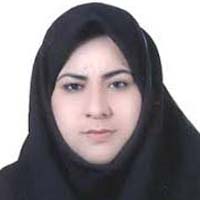Flood susceptibility prediction and zoning using maximum entropy model in Ilam province
Flood is a very common and catastrophic natural phenomenon that occurs on a global scale. The changes in the world's climate have caused an increase in temperature, heavy rains and floods. A flood is described as a natural disaster that results from the excessive accumulation of water in an area, usually from snowmelt, river flooding, heavy rainfall, or other factors that produce a large amount of surface runoff. When this runoff cannot be absorbed and discharged in time, it causes floods and river overflows. Correct assessment of flood risk in rural and mountainous areas is challenging. Because, quantifying flood susceptibility is a complex process. Floods occur not only as a result of excessive rainfall, but also due to the influence of various factors such as hydrological, geological, geomorphological and vegetation parameters. All over the world, natural disasters are a major threat to property and human life. Although it is impossible to prevent natural hazards, their negative impact can be reduced by creating strategies and effective planning. People in developing countries are usually severely affected by these disasters because their economies rely on natural resources. On the other hand, the problems in field investigation and the lack of data and information hinder flood experts and researchers in identifying flood-prone areas and predicting flood phenomena.
Ilam province is in the west of Iran, bordering with Iraq. It covers 2.1 percent of the entire country's area. This province is located at 31 degrees 58 minutes to 34 degrees 15 minutes north latitude and 45 degrees 24 minutes to 48 degrees 10 minutes longitude. It has mountainous and high areas in the eastern and northern areas, and on the other hand, in the western areas bordering with Iraq, the level of unevenness has been reduced, and in the southern and southwestern areas of the province, where plains and plains expand, it borders with Khuzestan province. Most of the urban and rural areas of Ilam, especially the northern areas and the eastern banks of the province, are located on the slopes of mountains and foothills with steep slopes, mostly covered with rocks, and also on the edge of rivers such as Simre, Gavi, Kanjancham, Doiraj, Mime and seasonal rivers with a long estuary and prone to destructive floods. have occurred, this has caused floods such as the floods of 1973-1994, 1997-1998, 1998, 2002, which have destroyed many infrastructures and vital arteries in the province.To carry out this research, first, the flood points of Ilam province were collected from the regional water organization and crisis management of the province. About 148 flood occurrence areas have been recorded, for the training samples a random division approach was used. In the current study, 70% (104) flood points were considered for building the model (training) and the remaining 30% (44 flood points) were used for validation. A total of 14 environmental parameters, including soil texture, rainfall, land cover and land use (LULC), topographic moisture index (TWI), distance from the river, digital elevation model (DEM), normalized different wet index (NDMI), vegetation index Normalized Difference (NDVI), Stream Power Index (SPI), Topographic Roughness Index (TRI), Density Drainage, Slope, Slope Direction, and Curvature were also entered for flood prediction using Maxent model as data.
In the maximum entropy model, the use of environmental parameters is mandatory. All raster layers are converted to ASCII format images in steps (same geographic coordinates, same number of rows and columns, and same pixel size value). Through flood sensitivity classification, it was divided into areas with high, medium and low/no sensitivity. About 2.06% of the studied area is at risk of severe floods, about 4.01% of the studied area is of medium risk, and about 93.93% of the studied area is in the range of low risk or no risk. At the micro level, flood vulnerability assessment for cities and villages in the study area provides a basic insight into local vulnerability. In total, 5 cities (Ilam, Sarablah, Dareh Shahr, Erkwaz and Chavar) and 92 villages are located in the high sensitivity area.The relative influence of each predictor variable on the results of flood sensitivity maps was evaluated using the jackknife test and sensitivity analysis of AUC. Regarding the validation according to the flood inventory points, the AUC is equal to 0.969. Therefore, the predictive ability of the model is excellent in the study area.The three main variables that played the greatest role in flood risks were land use, height, and slope, and their participation rates are 61%, 12.8%, and 10.4%, respectively..
Floods are the most common types of natural disasters that affect people's lives and property globally. In this research, as necessary, the Maxent machine learning approach was used to extract flood susceptibility maps for Ilam province. Using the output of Maxent, a flood sensitivity map was prepared in the province. About 2.06% of the province is located in the high sensitivity area, 4.01% in the medium sensitivity area, and 93.93% is located in the low or no sensitivity area. Due to the mountainous nature of the studied area, the low sensitivity range covers a larger area. Also, the factors that significantly influenced flood sensitivity in the region were identified. The analysis showed that land use changes (61%), altitude (12.8%) and slope (10.4%) were the primary factors affecting flood susceptibility. Slope direction, topographic roughness index, river flow strength index, vegetation and curvature had a negligible effect on flood susceptibility in the study area. Based on the obtained results, 5 cities (Ilam, Sarablah, Dereshahr, Arquaz and Chavar) and about 92 villages were identified in the flood-prone area with high sensitivity.
-
A Analysis of topographic threshold of gully erosion in the country based on meta-analysis of existing data
Zeinab Sheikhi, Aliakbar Nazari Samani *, , Reza Bayat
Journal of Range and Watershed Management, Summer 2025 -
Modelling Land-use Changes using MDC, MD and ML Algorithms (Case Study: Midawood-Dalon Watershed)
*, Heeva Elmizadeh, Mahshid Moavi
Arid regions Geographic Studies, -
Prediction of Gully Erosion and identifying factors affecting it using the Maximum Entropy Model and BCC-CSM2-MR climate change models for the years 2020-2040 (case study: Alamarvdasht watershed)
Shima Vosoghi, Reza Zakerinejad *,
Journal of Geography and Planning, -
A Comprehensive Analysis of Rainfall Trends and Climatic Breakpoints in Eastern Kermanshah Province: A Statistical Perspective on Climate Change
Sirous Shamshiri, Majid Karimpour Reihan *, Gholamreza Zehtabian, Hassan Khosravi,
Desert, Summer -Autumn 2024



